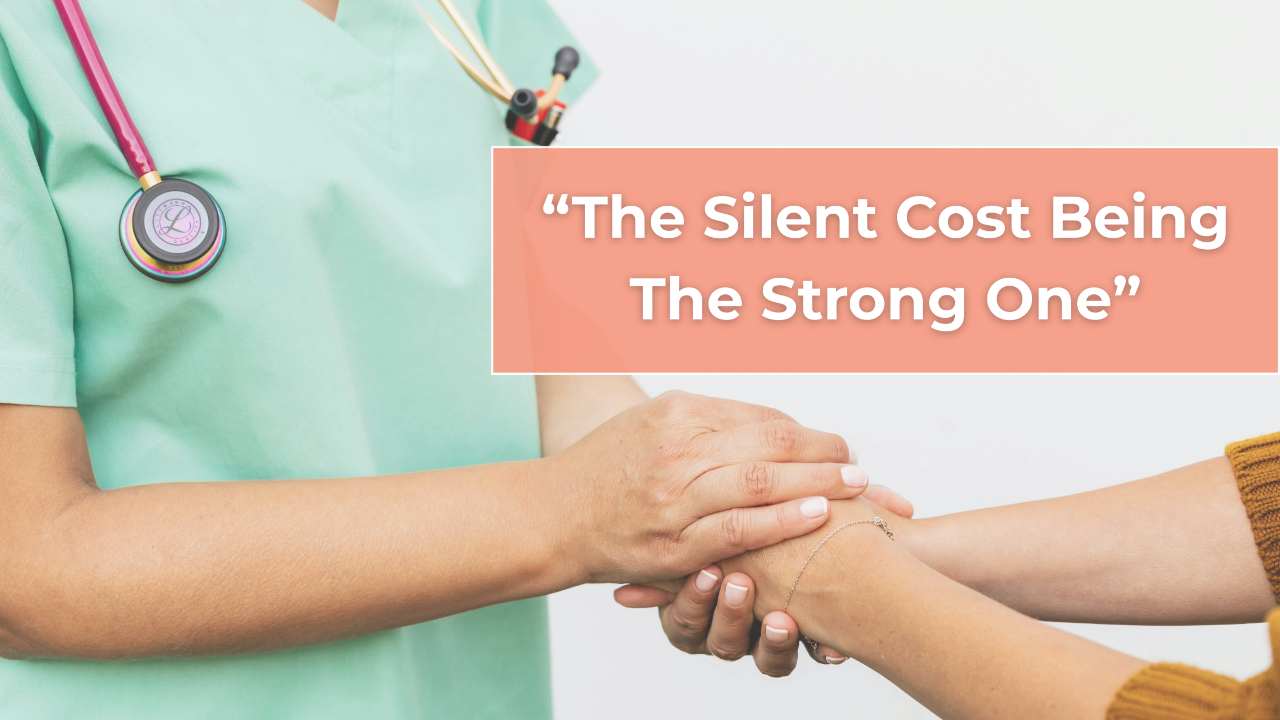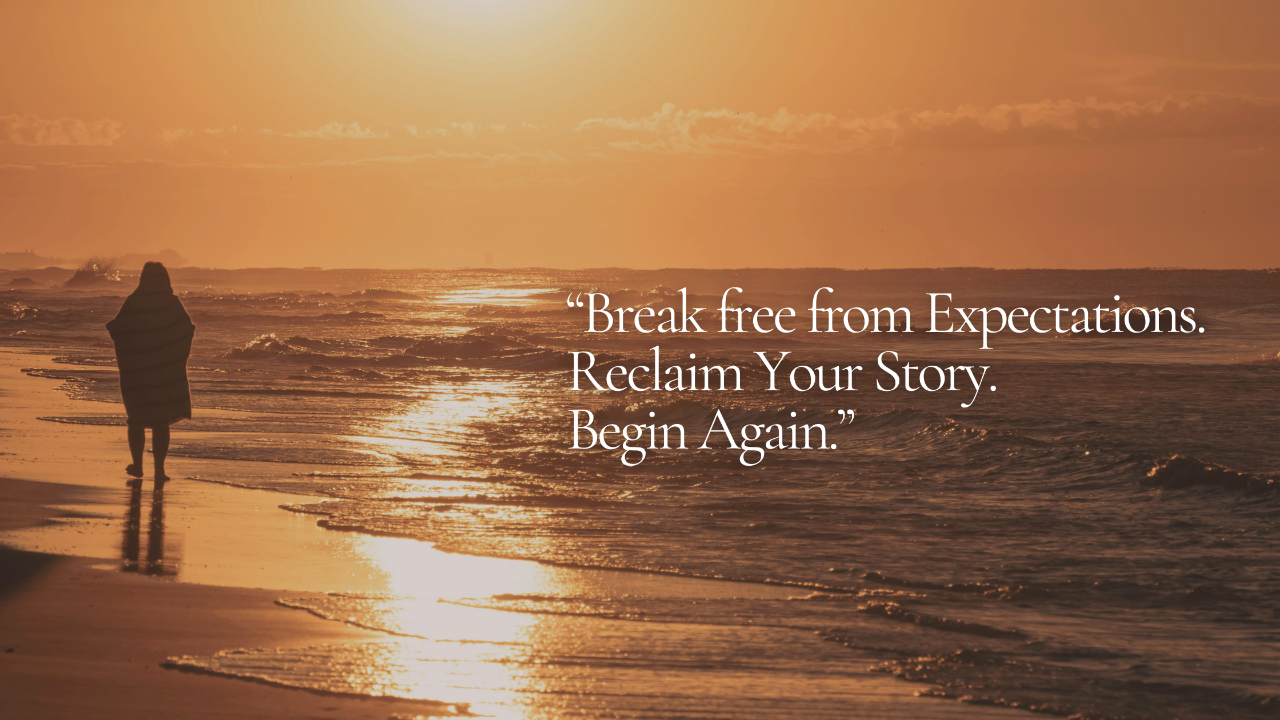Burnout: What It Looks Like, Why It Happens, and How to Reclaim a Life You Love
Mar 30, 2025
What happens when the very thing you’ve worked so hard for—your career, your calling, your identity—becomes the very thing breaking you? What do you do when pushing through is no longer an option?
That’s the raw truth of burnout, and chances are, if you’re reading this, you’ve either been there—or you’re dangerously close.
Burnout is more than feeling tired or needing a vacation. It’s a state of emotional, physical, and mental exhaustion that leaves you depleted and disconnected from yourself and your purpose. It sneaks in slowly and quietly, but it can leave a wake of destruction if it goes unaddressed.
In this post, we’ll explore what burnout actually looks like, why it happens from both a personal and scientific standpoint, and how to heal. We’ll also share the powerful story of Emily Glenn, a passionate professional whose experience with burnout led her to a new way of living—and helping others do the same.
What Burnout Looks Like: The Warning Signs We Often Miss
Burnout doesn’t always look like lying in bed unable to function. Sometimes it looks like high performance—on the outside. Smiling through meetings, hitting deadlines, keeping up appearances. But inside? Numbness, anxiety, fatigue, and disconnection.
Here are some common signs that you might be experiencing burnout:
- Physical fatigue that rest doesn’t fix
- Emotional exhaustion or feeling numb
- Irritability and cynicism
- Inability to concentrate or make decisions
- Frequent illness or headaches
- Loss of passion for work or things you once loved
- Feelings of guilt for needing rest
- Disconnection from purpose and relationships
If any of this feels familiar, you’re not alone. Burnout is incredibly common—and dangerously normalized in today’s high-pressure culture.
Why Burnout Happens: The Science of Stress and Overload
Burnout is the result of chronic, unmanaged stress. According to the World Health Organization, burnout is classified as an “occupational phenomenon” caused by prolonged workplace stress that hasn’t been successfully addressed. But it’s not limited to work—it can happen in parenting, caregiving, ministry, or any area where output exceeds replenishment.
Scientifically, when we’re stressed, our bodies release cortisol and adrenaline—stress hormones meant to help us handle short-term threats. But when these hormones are elevated for too long, they dysregulate our nervous system, impair our immune system, and reduce the function of our prefrontal cortex—the part of our brain responsible for focus, decision-making, and emotional regulation.
In short: chronic stress rewires your brain and body to survive, not thrive.
And in a culture that glorifies hustle, productivity, and perfection, we often override our body’s early warning signs—until we can’t anymore.
Emily’s Story: When Purpose Becomes Pressure
On a recent episode of the It’s Your Story to Tell podcast, I had the honor of sitting down with Emily Waterman Glenn—a woman whose story brings the science and emotion of burnout into full clarity.
Emily wasn’t just tired—she was unraveling. A deeply driven professional, she was committed to doing meaningful work. But over time, the very thing she loved became the thing that was draining her dry.
She shared:
“At first, I thought it was just stress. I told myself I just needed to push through, take a weekend off, or get better organized. But deep down, I knew something bigger was happening.”
The signs were there—fatigue, irritability, emotional distance—but like so many of us, Emily dismissed them as temporary. That is, until her mind, body, and spirit finally said: Enough.
“I reached a point where I physically couldn’t keep going. I realized burnout wasn’t just about being tired—it was a full-body shutdown. I had to take a mental health leave, and that was one of the hardest decisions I’ve ever made.”
The Courage to Step Away: Breaking the Shame Cycle
Stepping away from work or responsibilities can be one of the most countercultural, yet necessary decisions we make in recovery from burnout.
Emily admitted that when she made the decision to take a break, she wrestled with guilt.
“I felt like I was failing. I had worked so hard to get where I was, and stepping away felt like quitting. But the truth is, it was the bravest thing I could do.”
And she’s right. Rest isn’t weakness. It’s wisdom.
Burnout isn’t a moral failure. It’s a biological and emotional signal that something must change. Pushing through may feel noble, but it only delays the inevitable crash.
The Road to Recovery: Rebuilding from the Inside Out
Burnout recovery isn’t just about taking time off. It’s about rebuilding the way you live, think, work, and relate to yourself.
As Emily shared in Part 2 of our conversation, healing required more than rest—it required deep unlearning and redefinition.
1. Regulate Your Nervous System
The body must feel safe before the mind can begin to heal. Emily began using tools like breathwork, grounding exercises, journaling, and time in nature to help calm her nervous system.
“I had to learn how to be still. To stop reacting to urgency and start listening to what my body and spirit needed.”
Science backs this up: techniques that stimulate the vagus nerve—like deep breathing, humming, or cold exposure—help shift us from a stress response into a healing state.
2. Challenge Old Beliefs
Emily had to confront long-held beliefs about worthiness and success.
“I realized I had equated my value with my productivity. If I wasn’t achieving something, I didn’t feel enough. That belief had to go.”
This is common in burnout. Many people believe they must prove themselves to earn rest, love, or approval. But healing begins when you believe you're worthy just because you exist—not because of what you do.
3. Set Fierce Boundaries
One of the most transformational parts of burnout recovery is learning to say no—without guilt.
Emily began redefining her boundaries and saying no to people, opportunities, and patterns that once kept her stuck in over functioning.
“I had to give myself permission to prioritize peace over pleasing people.”
4. Redefine Success
Healing from burnout often means creating a new definition of success—one that includes rest, joy, relationships, and spiritual alignment, not just achievements.
Emily now helps others navigate their own burnout stories through coaching and advocacy. Her comeback story isn’t about going back to who she was—it’s about becoming someone even more whole, grounded, and intentional.
“My life now is slower, but it’s richer. I’ve learned that thriving isn’t about doing more—it’s about doing what matters, from a healthy place.”
You Can Create a Life You Love—Without Burning Out to Earn It
So many of us wait until the crash to change. But what if burnout didn’t have to be your breaking point? What if it became your turning point?
Here’s what reclaiming your life might look like:
- Living by rhythm, not pressure
- Choosing purpose, not performance
- Honoring your body’s cues, not overriding them
- Building boundaries, not walls
- Restoring joy, not chasing exhaustion
You don’t have to go back to who you were before burnout. You get to become someone wiser, more connected, and more at peace.

From Burned Out to Lit Up Again
If you’re in burnout now—or feel it creeping in—know this: You are not alone. You are not broken. And you are not weak for needing rest.
You deserve to live a life you don’t have to recover from. You were never meant to run on empty. You were meant to live full, whole, and free.
And as Emily’s story shows, healing is possible. Transformation is real. And your next chapter can be better than you imagine—if you’re brave enough to begin again.
Need help navigating burnout or building a life you love? Let’s connect. Your story matters—and it’s never too late to rewrite it.
View The Entire Collection
See all our blog posts to discover valuable insights and tools for navigating trauma and healing with guidance and support.












